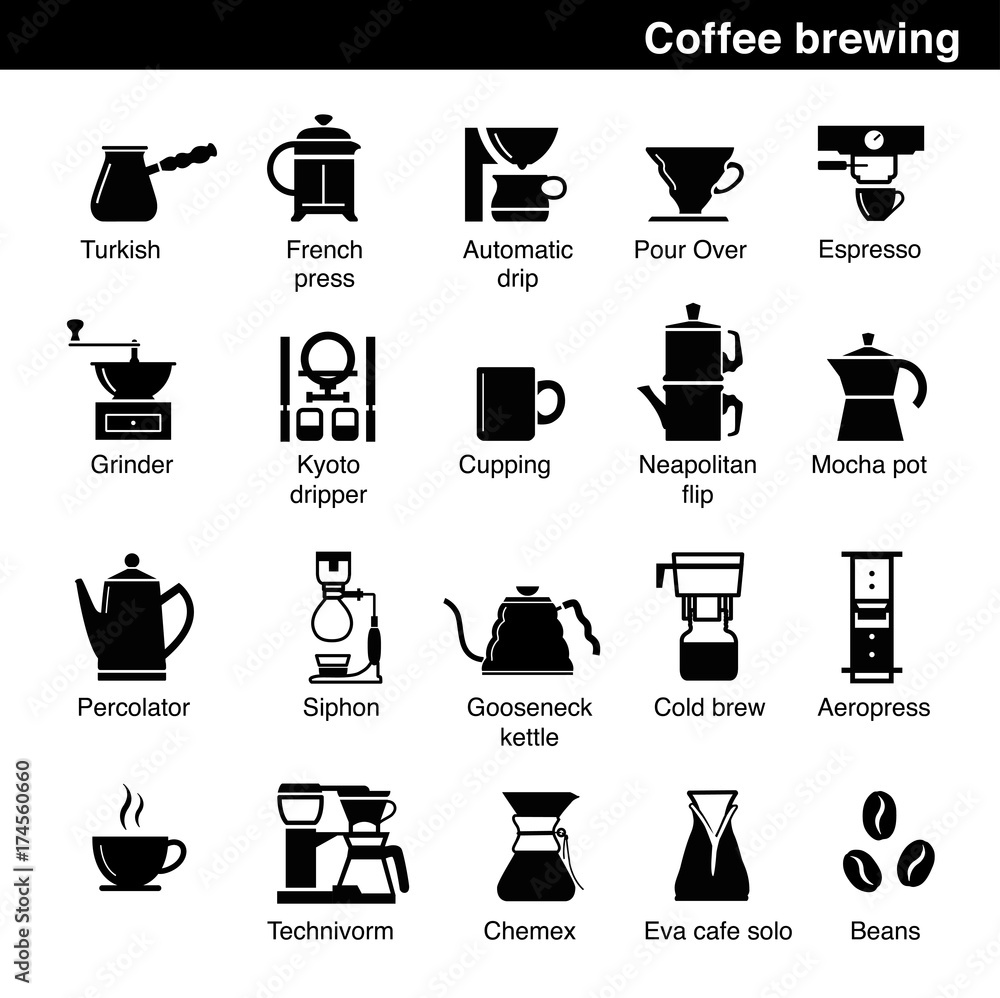Discovering the very best Coffee Brewing Methods for Perfect Flavor Each Time
Discovering the very best Coffee Brewing Methods for Perfect Flavor Each Time
Blog Article
The Scientific Research Behind Coffee Developing: Exactly How Temperature Level and Time Affect Your Beverage
Understanding the science behind coffee developing exposes that temperature level and time are not mere variables however critical aspects that determine the drink's flavor profile and overall quality. As we check out the nuances of these elements, the concern emerges: exactly how can one effectively balance temperature level and time to accomplish that excellent mixture?
The Chemistry of Coffee Removal
The chemistry of coffee removal looks into the complex procedures that transform raw coffee beans into the aromatic beverage enjoyed worldwide. This makeover mostly includes the solubility of various compounds existing in the beans, which are influenced by variables such as grind dimension, water top quality, and the brewing technique utilized.
During the developing procedure, hot water serves as a solvent, extracting soluble substances, including high levels of caffeine, acids, lipids, and sugars, from the coffee premises. Each compound contributes to the taste account, scent, and body of the last beverage. Acids are liable for tangy and bright notes, while oils contribute to an abundant mouthfeel.
The initial phases of developing extract acids and sugars, leading to a pleasant acidity, while long term extraction can lead to anger due to over-extraction of unwanted substances. Understanding these chemical communications is crucial for enhancing brewing methods, as the balance in between extraction time and water temperature can substantially influence the total quality of the coffee.
Perfect Brewing Temperatures
Discovering the ideal developing temperature level is important for opening the full possibility of coffee tastes and aromas - coffee brewing methods. Study suggests that the optimal variety for brewing coffee exists in between 195 ° F to 205 ° F(90 ° C to 96 ° C) Within this variety, the extraction process efficiently dissolves the preferable soluble substances in coffee beans, bring about a well balanced and delicious cup
Developing at lower temperatures, such as listed below 195 ° F(90 ° C ), might lead to under-extraction, producing a weak and acidic mixture with soft tastes. Alternatively, developing at temperatures surpassing 205 ° F(96 ° C) can bring about over-extraction, producing a harsh and bitter taste because of the too much dissolution of unfavorable compounds, such as tannins.
Furthermore, the excellent developing temperature can vary relying on the coffee bean type and roast level. Lighter roasts usually benefit from a little greater temperature levels to improve their intricate flavor profiles, while darker roasts may be better fit to reduced temperature levels to reduce anger.
Inevitably, maintaining precision in brewing temperature levels is vital for attaining a harmonious balance of flavors, making certain that every mug of coffee supplies a rewarding sensory experience.
Impact of Brewing Time
Developing time plays a critical function in identifying the taste account and general high quality of coffee. Shorter developing times can result in under-extraction, leading to a sour or weak taste, as not enough soluble compounds are liquified.
Optimal developing time differs depending on the technique made use of and the work size of the coffee. For circumstances, a French press commonly needs concerning four mins, while coffee extraction is generally finished within 25 to 30 secs. get redirected here It is vital to adjust developing time in combination with various other variables, such as water temperature and coffee-to-water proportion, to accomplish the desired flavor account.
Comprehending the impact of developing time allows coffee fanatics to improve their brewing techniques, ultimately enhancing the sensory experience of their mug (coffee brewing methods). With cautious focus to this variable, one can unlock the complete potential of the coffee, exposing its special attributes and nuances
Developing Approaches and Their Effects

For instance, techniques like French press and chilly mixture permit a longer steeping time, causing a fuller body and durable taste as a result of increased removal of oils and soluble solids. Alternatively, coffee brewing uses high pressure and a shorter extraction time, generating a focused shot that emphasizes extreme flavors and an abundant crema.
Pour-over methods, such as Chemex or V60, provide a more regulated extraction process, permitting the brewer to adjust circulation price and water distribution, which can boost brightness and clarity. At the same time, percolation approaches cycle water via the coffee grounds multiple times, resulting in a more powerful, usually bitter taste.
Last but not least, making discover this use of paper filters versus steel filters can likewise impact the final taste; paper filters generally generate a cleaner cup by trapping oils and great bits, while steel filters permit more oils to pass through, adding to a fuller mouthfeel - coffee brewing methods. Recognizing these nuances can raise the coffee experience significantly
Tips for Developing Your Mixture
A well-executed brew can change even the simplest coffee right into an amazing experience. To accomplish this, interest to information is essential. Begin with high-quality, newly roasted beans, as their flavor account reduces over time. Grind the beans simply before brewing to make best use of freshness, guaranteeing the grind dimension matches your developing approach-- coarser for French press and finer for espresso.
Water quality plays a vital function; usage filtered water complimentary from impurities. The suitable brewing temperature level ranges in between 195 ° F and 205 ° F(90 ° C to 96 ° C ) As well warm can blister the coffee, while as well great may under-extract flavors.
Timing is just as essential. For immersion approaches, soaking for three to 5 mins is optimal, whereas drip methods typically take about five mins. Experiment with brew times to find your preferred toughness.

Final Thought
In recap, the complex relationship between temperature level and time is critical in the coffee brewing procedure. Sticking to ideal developing temperatures in between 195 ° F and 205 ° F, together with accurate timing tailored per approach, ensures the desired flavor profile is accomplished. Recognizing these scientific concepts empowers individuals to fine-tune their brewing techniques, ultimately resulting in a more balanced and delightful coffee experience. Mastery of these variables is necessary for any kind of coffee enthusiast looking for excellence in their drink.
Comprehending the scientific research behind coffee developing reveals that temperature level and time are not plain variables but critical aspects that determine the beverage's flavor profile and total quality. Recognizing these chemical interactions is vital for enhancing developing strategies, as the equilibrium in between extraction time and water temperature level can dramatically influence the overall high quality of the coffee.Brewing time plays a crucial duty in identifying the flavor account and general top quality of coffee. By concentrating on these components-- bean top quality, grind dimension, water temperature, steeping time, and ratio-- you can elevate your coffee brewing procedure, resulting in a constantly premium cup.
In recap, the elaborate partnership between temperature level and time is critical in the coffee developing procedure.
Report this page